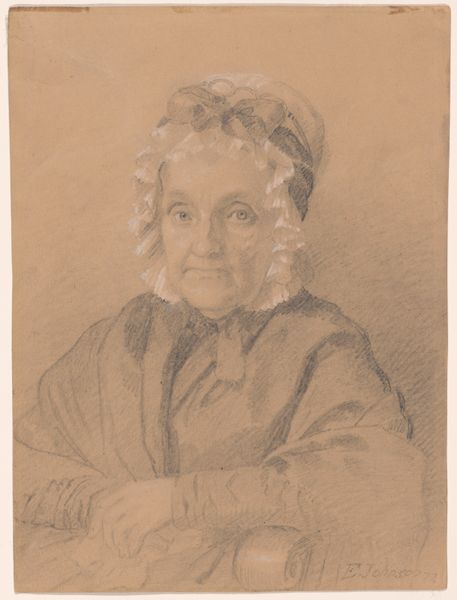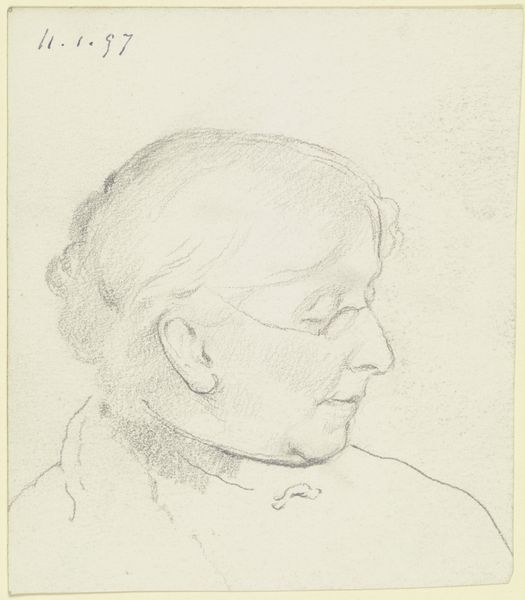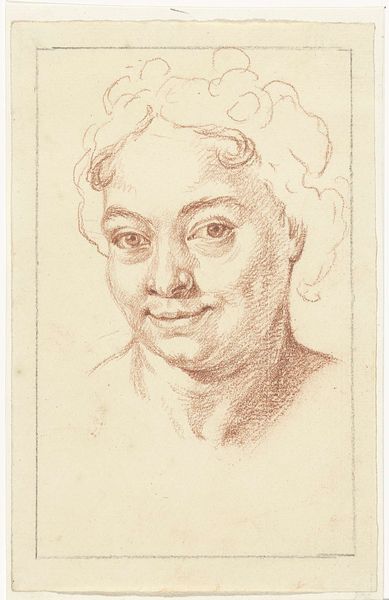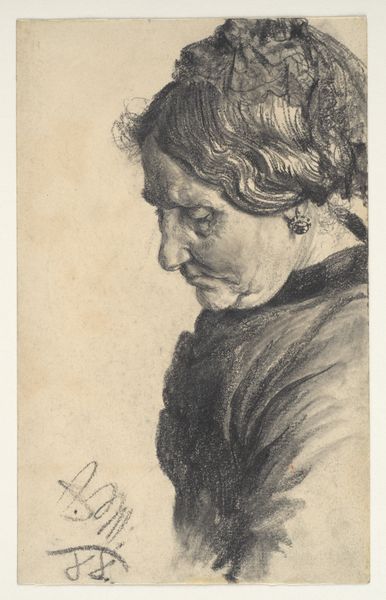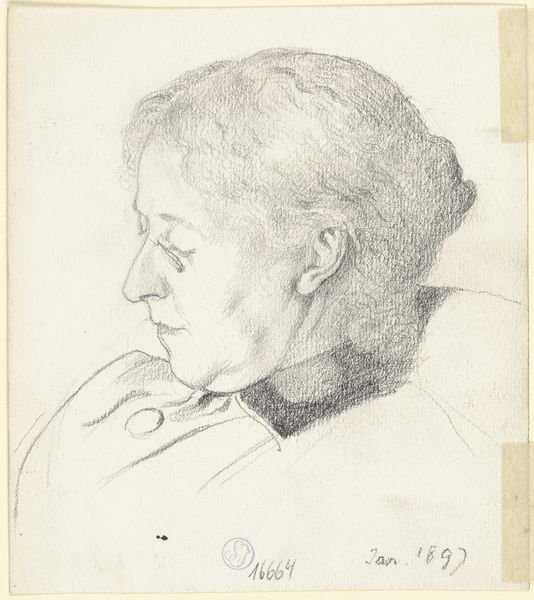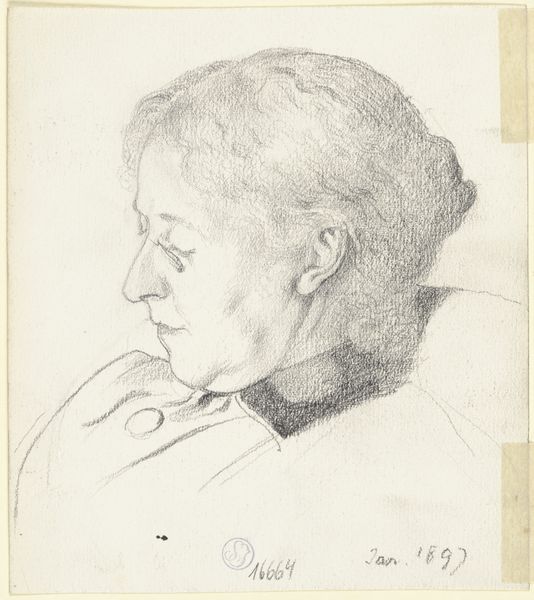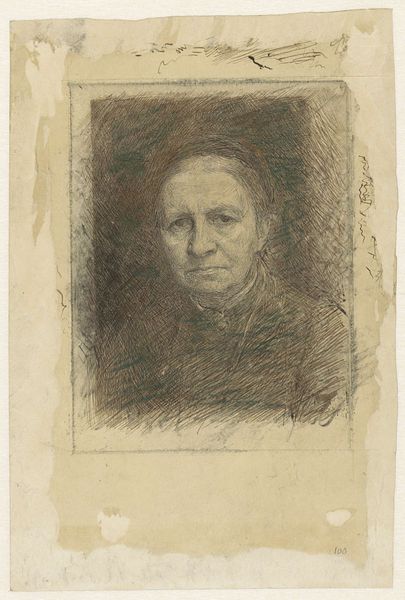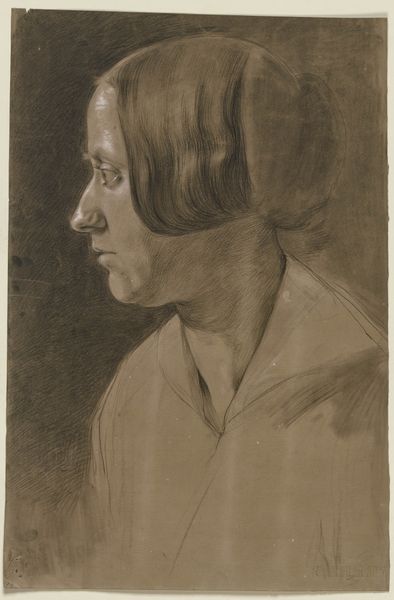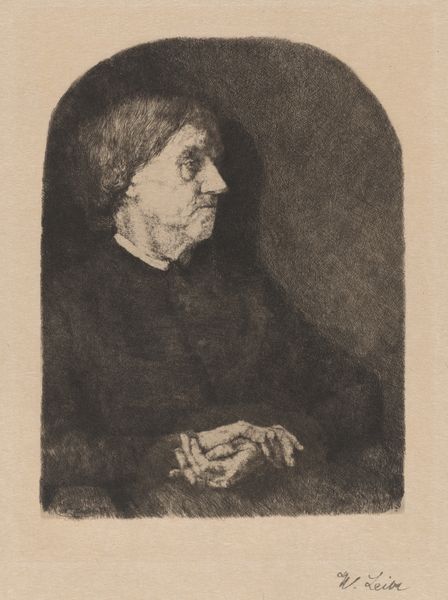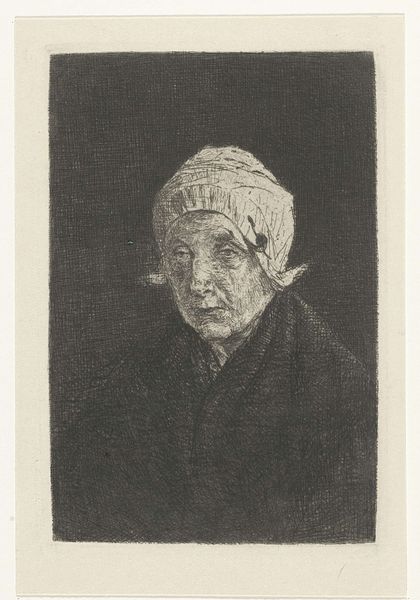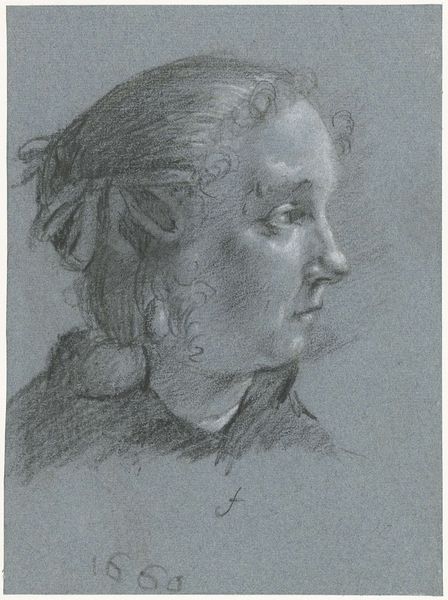
drawing, paper, chalk, charcoal
#
portrait
#
drawing
#
baroque
#
charcoal drawing
#
paper
#
chalk
#
charcoal
#
portrait art
Copyright: Public Domain
Curator: Here we have a striking portrait by Jan Kupecký, rendered in charcoal and chalk on paper. It is titled "Männlicher Porträtkopf (Phantasieporträt Rembrandts)," which translates to "Male Portrait Head (Imaginary Portrait of Rembrandt)." Editor: It’s immediately arresting. There’s a profound sense of melancholy radiating from this face, amplified by the limited tonal range of the drawing, mostly grey hues. I’m drawn to the knowing yet weary look in the subject's eyes. Curator: Yes, the use of chiaroscuro, the strong contrast between light and dark, typical of the Baroque period, enhances that dramatic effect. Note how the artist uses white chalk to highlight the forehead and nose, drawing our attention to the sitter’s intellect and experience. The charcoal lines, applied with a sensitive hand, define the facial structure with remarkable precision, wouldn't you agree? Editor: Precisely. The gaze certainly carries weight, embodying an internal narrative tied to societal position during that era. It speaks of the male gaze, doesn't it? Kupecký paints this subject who could only rise in the world through his privileged social standing. It's not an attempt to flatten and simplify the figure, but to see the real, perhaps tormented humanity, underneath. Curator: You highlight a key tension. While social commentary may be embedded, let’s not diminish Kupecký's sheer artistic skill. The cross-hatching technique, particularly around the headdress, shows exceptional control, building depth and texture in the most efficient manner. Editor: Of course, formal mastery is undeniable here, but can we separate technique from its cultural implications? The choice of medium itself evokes associations with classical portraiture—the very act of portraiture during the Baroque era reinforcing certain social hierarchies. The lack of vibrant colours can also be read as commentary on the austerity imposed during a certain moment of upheaval in society. Curator: Fair point. However, regardless of these sociohistorical perspectives, Kupecký demonstrates a unique grasp of form and shadow. Studying his skillful charcoal work, and his blending, you are not merely staring at an historical artwork, but staring into a masterful and profound face rendered expertly with an almost photographic sense of perspective. Editor: This interplay between artistic skill and potential social commentary certainly makes the drawing so evocative. I walked away with the feeling that perhaps I know just a bit more about both art and life after experiencing it.
Comments
No comments
Be the first to comment and join the conversation on the ultimate creative platform.
